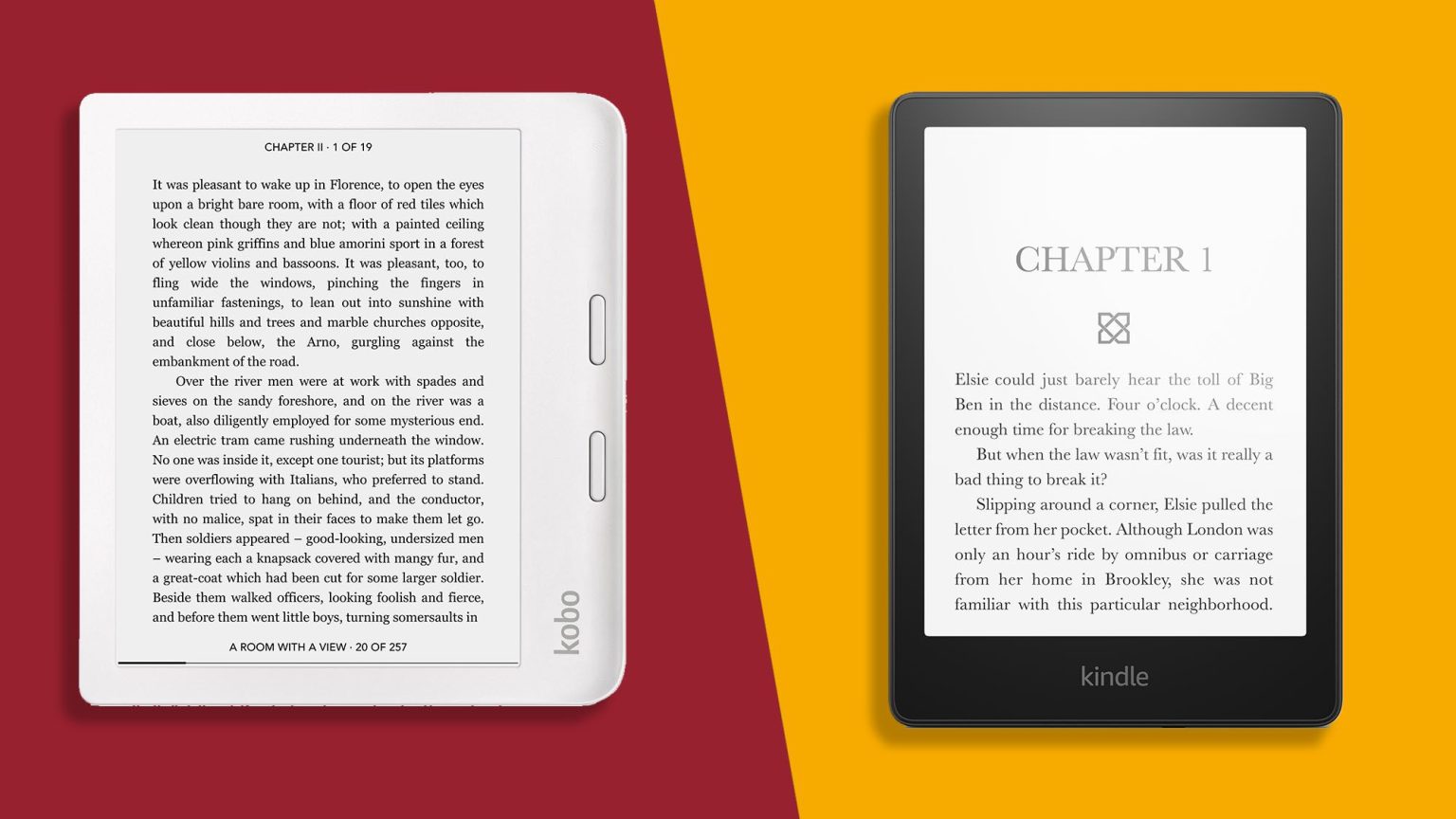In 2025, e-readers remain the go-to devices for book lovers who prefer digital libraries over stacks of paperbacks. The two giants in this space—Amazon Kindle and Kobo—continue to dominate, but each has unique strengths that appeal to different readers.
If you’re wondering whether to invest in a Kindle or Kobo, this detailed comparison breaks down design, display, performance, ecosystems, and pricing so you can make the right choice.
Design and Build Quality
- Amazon Kindle (Paperwhite & Oasis line): Sleek, lightweight, and built for comfort. The Oasis offers a premium metal frame, while the Paperwhite balances affordability with durability.
- Kobo (Clara, Libra, and Elipsa series): Slightly more angular design but excellent ergonomics. Many models include physical page-turn buttons, something Kindle reserves for its top-tier devices.
Display and Reading Experience
- Kindle: Uses Amazon’s latest E Ink Carta 1300 technology, delivering crisp text, smoother page turns, and adjustable warm lighting.
- Kobo: Matches Kindle with E Ink Carta screens, but often includes higher resolution in mid-range models and ComfortLight PRO for reduced eye strain at night.
Library and Ecosystem
- Kindle: Access to the world’s largest e-bookstore—Amazon’s Kindle Store—with exclusive titles, Kindle Unlimited, and integration with Audible for audiobooks.
- Kobo: Taps into the Rakuten Kobo store, offering millions of titles, plus unique library integration through OverDrive, allowing users to borrow e-books directly from public libraries.
File Support and Flexibility
- Kindle: Primarily supports Amazon’s AZW and MOBI (transitioning to EPUB), but less friendly with third-party files unless converted.
- Kobo: Widely praised for supporting EPUB, PDF, MOBI, and CBZ/CBR (great for comics). This flexibility makes Kobo a better choice for users outside Amazon’s ecosystem.
Pricing in 2025
- Kindle: Entry-level models start at around $129, with premium Oasis and Scribe editions reaching $299–$379.
- Kobo: Ranges from $139 for Kobo Clara to $399 for the note-taking Kobo Elipsa 2E.
Key Features Comparison
| Feature | Amazon Kindle | Kobo |
|---|---|---|
| Screen Quality | E Ink Carta 1300, smooth performance | E Ink Carta, higher resolution in mid-range |
| Library Access | Kindle Store, Kindle Unlimited, Audible | Kobo Store, OverDrive (library borrowing) |
| File Support | AZW, MOBI, EPUB (limited) | EPUB, PDF, MOBI, CBR/CBZ |
| Price Range (2025) | $129–$379 | $139–$399 |
| Notable Extras | X-Ray, Whispersync, Audible sync | OverDrive, Pocket integration, more formats |
Which E-Reader Wins?
- Choose Kindle if you want the largest bookstore, tight Amazon integration, or you already use Kindle Unlimited/Audible.
- Choose Kobo if you value format flexibility, library borrowing, and more affordable mid-range models with advanced display features.
In 2025, Kobo wins on flexibility and file support, while Kindle wins on ecosystem and exclusive content.
FAQs
Q: Can Kobo read Kindle books?
Not directly. Kindle books are DRM-protected, so conversion is required, which may not always be legal depending on your region.
Q: Which e-reader has better battery life in 2025?
Both Kindle and Kobo last 4–6 weeks on a single charge with regular use, depending on backlight and Wi-Fi usage.
Q: Do both devices support audiobooks?
Kindle supports Audible integration natively. Kobo supports audiobooks but with fewer titles compared to Amazon.
Final Thoughts
When choosing between Kindle and Kobo in 2025, it all comes down to what matters more:
- Kindle for readers deep in Amazon’s ecosystem who want ease and exclusivity.
- Kobo for readers who prefer open file support, library borrowing, and flexibility.
No matter which you pick, both devices ensure a smooth and enjoyable reading experience in the digital age.
READ ALSO: Best Free AI Image Generators in 2025
